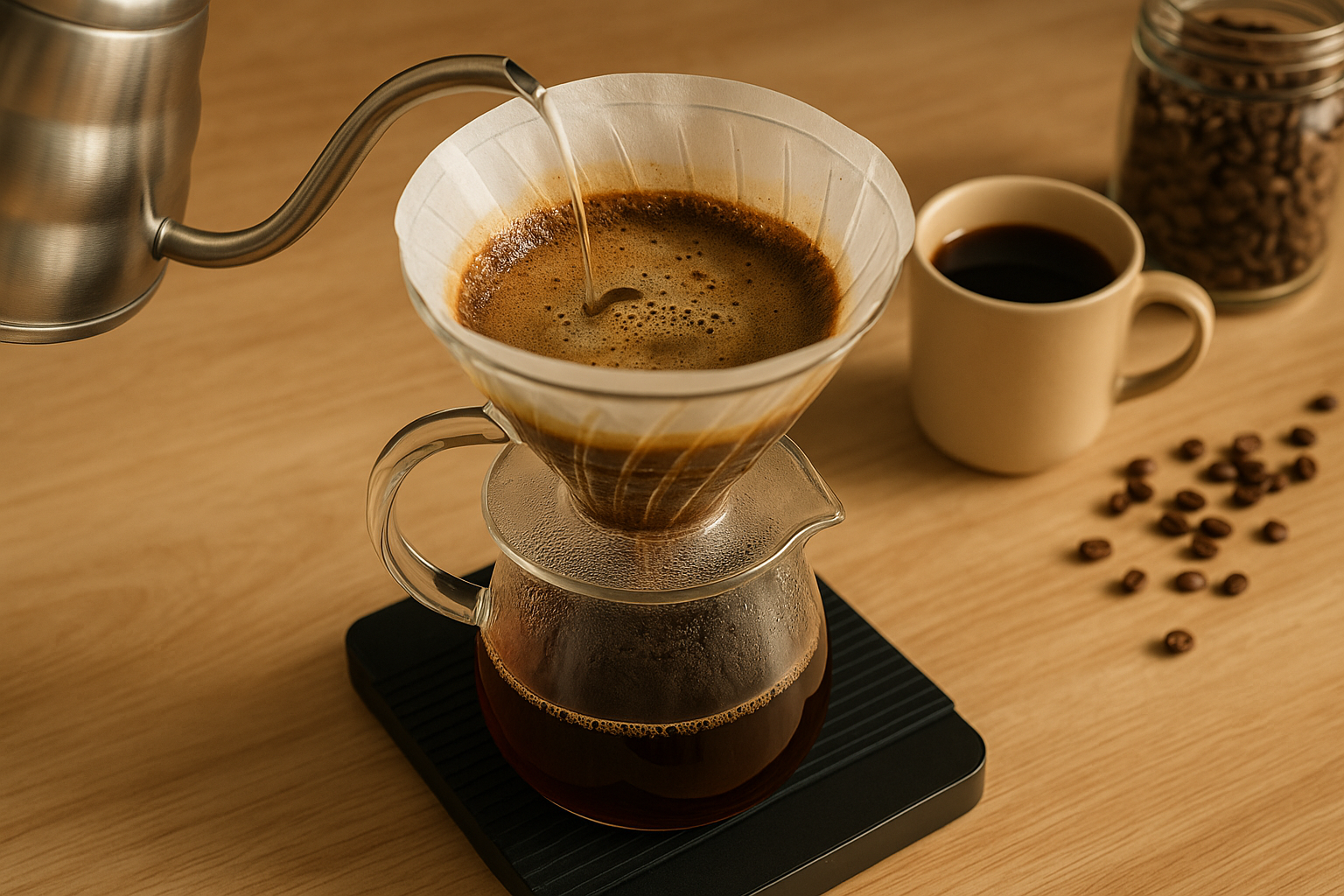Pour-over coffee has become a favorite among coffee lovers because of its clean, aromatic, and balanced flavor.
While it may look like a simple brewing method, achieving café-quality results at home requires attention to detail, quality ingredients, and the right technique.
Whether you’re aiming to replicate the rich complexity of your favorite coffee shop or simply want to improve your home-brewing skills, mastering the pour-over method can transform your coffee experience.
Why Choose Pour-Over Coffee?
Pour-over coffee allows greater control over brewing variables such as water temperature, pouring speed, and extraction time.
This level of control means you can highlight the unique flavors of each coffee bean, creating a cup that’s tailored to your taste.
Unlike automatic drip machines, pour-over brewing emphasizes precision and craftsmanship, making each cup a rewarding ritual.
Essential Tools and Ingredients
Before starting, make sure you have the right equipment:
- Pour-over dripper (Hario V60, Kalita Wave, or Chemex)
- Paper or metal filter
- Gooseneck kettle for controlled pouring
- Burr grinder for consistent grind size
- Digital scale to measure coffee and water accurately
- Freshly roasted coffee beans
- Filtered water for better flavor
Choosing the Right Coffee Beans
For the best results, choose freshly roasted beans and use them within two to four weeks of roasting. Light to medium roasts are often preferred for pour-over because they highlight the coffee’s acidity, floral notes, and complexity.
Grind Size Matters
The grind size for pour-over coffee should be medium-fine—similar to table salt. Too fine, and your coffee will over-extract, becoming bitter.
Too coarse, and it will under-extract, resulting in a weak, sour cup. A burr grinder is essential for achieving a uniform grind that ensures even extraction.
The Ideal Coffee-to-Water Ratio
A common starting point is 1:15 or 1:16 (1 gram of coffee for every 15–16 grams of water). For example, use 25 grams of coffee with 375–400 grams of water. Adjust to your taste preference once you’re comfortable with the method.
Step-by-Step Brewing Guide
1. Heat the Water
Heat filtered water to about 92–96°C (197–205°F). Using water that’s too hot can cause bitterness, while cooler water can lead to under-extraction.
2. Rinse the Filter
Place the filter in the dripper and rinse it with hot water. This removes any paper taste and preheats the dripper and carafe. Discard the rinse water before brewing.
3. Add Coffee Grounds
Weigh and grind your coffee, then place it into the filter. Gently shake the dripper to level the grounds for even extraction.
4. Bloom the Coffee
Start your timer and pour just enough hot water (about twice the weight of the coffee) to wet all the grounds. This “bloom” phase allows trapped gases to escape and prepares the coffee for even brewing. Wait 30–45 seconds.
5. Begin the Pour
Pour water in a slow, circular motion, starting from the center and moving outward. Avoid pouring directly on the filter to prevent bypass. Maintain a steady, gentle flow.
6. Control the Flow
Continue pouring in stages until you reach the desired water weight. The total brew time should be around 2.5 to 4 minutes, depending on your grind size and desired strength.
7. Serve and Enjoy
Once the water has completely drained through the coffee, remove the dripper and give the brewed coffee a gentle swirl before serving.
Common Mistakes to Avoid
- Using old coffee: Always start with fresh beans for the best flavor.
- Inconsistent pouring: Pouring too fast or unevenly can cause uneven extraction.
- Ignoring water quality: Tap water with high mineral content can affect taste—use filtered water instead.
- Wrong grind size: A poor grind can ruin even the best beans.
Flavor Adjustments and Experiments
Once you master the basics, you can start experimenting:
- Try different coffee origins to explore unique flavor notes.
- Adjust your brew ratio for stronger or lighter coffee.
- Play with water temperature to enhance certain flavors.
Why Café Pour-Over Tastes Different
Baristas often follow precise recipes, use high-quality water filtration systems, and calibrate their grinders regularly. Replicating these steps at home brings you closer to that coffee shop quality.
Final Thoughts
Brewing pour-over coffee like a café is about patience, precision, and passion. The more you practice, the more intuitive the process becomes.
Soon, you’ll be crafting coffee that rivals your favorite coffee shop—right in your own kitchen. Not only will you enjoy better coffee, but you’ll also appreciate the art and science that go into every cup.
